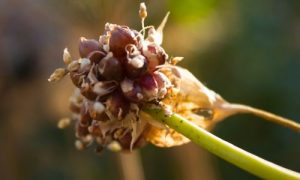 People usually ask about planting a butterfly or pollinator garden in the spring, just before our weather turns hot and dry. October, though, is the best month for starting wildflower seeds, therefore it has been selected as Native Plant Month.
People usually ask about planting a butterfly or pollinator garden in the spring, just before our weather turns hot and dry. October, though, is the best month for starting wildflower seeds, therefore it has been selected as Native Plant Month.
When Seeds Set
If you observe wildflowers, most have set seeds by August and September. Fall bloomers are the exception, as they are just beginning their bloom, which sometimes continue until frost. Nature will start allowing seeds to drop now until spring.
Dispersal
Wind will help in dispersal of some and other seeds may hitch a ride. Bidens-Spanish Needles and sandspurs are notorious hitchhikers. Birds feeding may facilitate dispersal and planting.
 Sprouting
Sprouting
Wildflower seeds have different times to sprout. Each individual species sprouts at their own appropriate time when the moisture, soil temperature, light or darkness and even chilling works for them. Some may sprout in the fall and over winter as low rosettes of foliage. Others need chilling and won’t sprout until spring.
Planting
When planting choose an area free of weeds in full sun. Sow on the surface and press the seeds into the soil, but do not cover. A light open mulch of pine needles can be used.
Remember some seeds need light to germinate.
You may water ¼ to ½ inch daily for a couple of weeks to encourage sprouting, then taper off so you don’t overwater. If you have chosen species for your particular soil, moisture, and light, they should survive on natural rain fall.
Useful Links
The Florida Wildflower Foundation has links to a booklet on “20 Easy-To-Grow Wildflowers” and a link to the Florida Wildflower Cooperative which grows seeds for sale. It also has information on preparing the soil for wildflower seeds.
Florida’s Native Wildflowers | Florida Wildflower Foundation (flawildflowers.org)
____
This article was written by Brenda Daly, a MGV with many years of experience both as an accomplished gardener and as a volunteer in our robust Jacksonville, Duval County horticultural program.
 3
3


